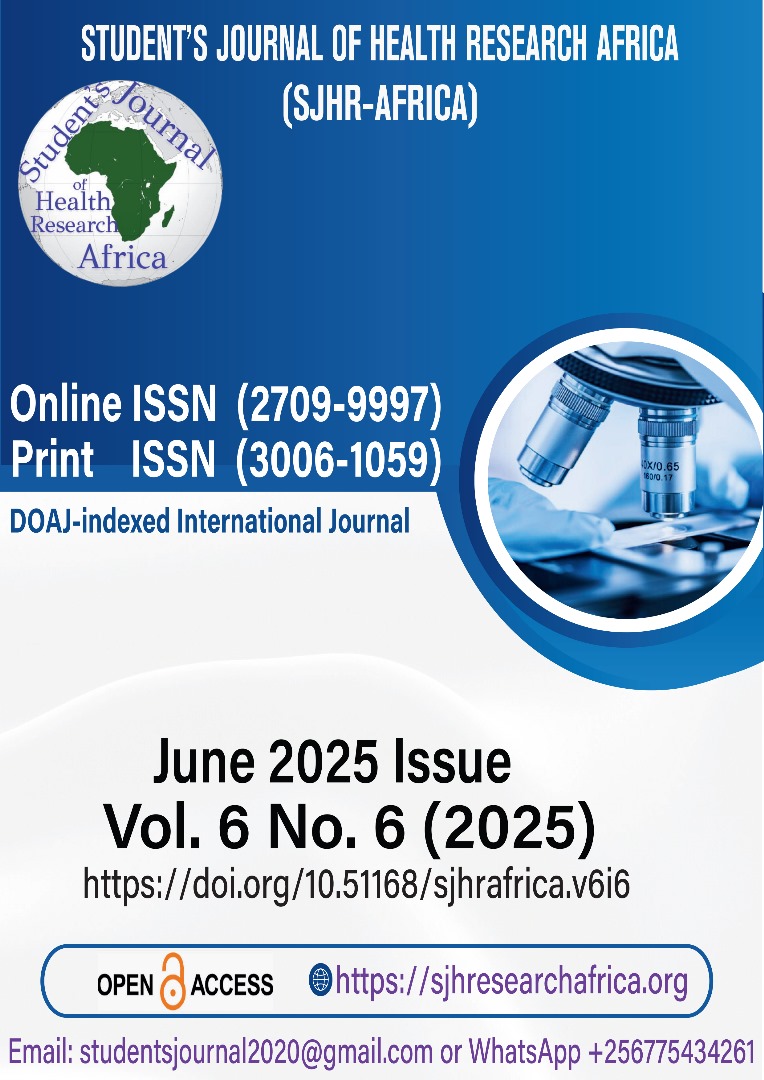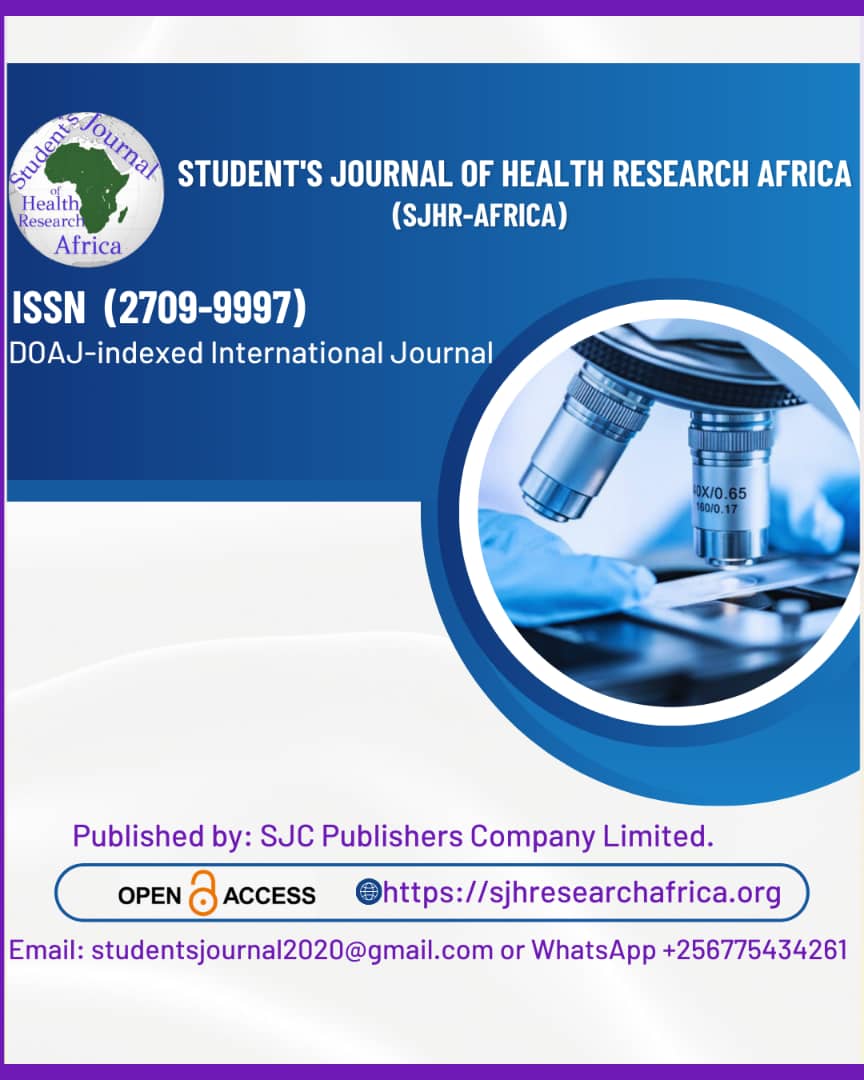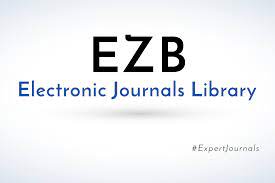DESIGN, IMPLEMENTATION, AND EVALUATION OF A PRACTICE-BASED DEVELOPMENT PROJECT.
DOI:
https://doi.org/10.51168/sjhrafrica.v6i6.1611Keywords:
Design, Implementation, Evaluation of a Practice-Based Development ProjectAbstract
Background.
A project is being undertaken to improve the functionality and well-being of children with disabilities, particularly in Fort Portal City and Kabarole District, through improved access to quality health care, habilitation, and rehabilitation services. The initial phase of the project targeting Kabarole Hospital started in March 2021 and ended in June 2022.
Project design.
The project seeks to increase access of CWDs to comprehensive, friendly services and information, strengthen the capacity of health facilities to provide quality health care and rehabilitative services to CWDs, and increase community and family awareness, support, and care to CWDs.
Results.
By the end of the first phase (July 2021- June 2022) of actual implementation of the project notable achievements included training 18 health facility staff as CWD FPs, formation of nine community support groups, conducting 98 monthly outreaches to community support groups and nine monthly support supervision visits to the health facilities in addition to 211 home visits to families of CWDs. Training of 22 CHWs and 9 sensitization meetings have been conducted, 25 referrals for specialty care made, and 177 CWDs have been identified and recruited into health care at the lower-level health facilities. Quality of life for CWDs has improved to 60% (from a baseline), and patient satisfaction improved to 80% (from a baseline of 30%). Access to care improved by 52%.
Conclusions.
Improving access to quality care for CWDs and engaging the family, peers, and larger community with active participation of CWDs and their parents/caretakers enhances the well-being of CWDs.
Recommendations.
While services need to be built up, a lack of interventions on multiple fronts is visible. There is therefore a need for the government and partners to give higher priority to the disability issue in the child and adolescent health agendas.
References
AAP (American Academy of Pediatrics) (2012). Recommendations for pediatric preventive health care: Bright Futures/American Academy of Pediatrics. https://www.aap.org/en-us/Documents/periodicity_schedule.pdf
Accounts Commission (2002), The Map to Success: Using Process Mapping to Improve Performance. 2000: Audit Scotland. [online]. Available from https://www.audit-scotland.gov.uk/report/the-map-to-success-using-process-mapping-to-improve-performance [Accessed: 12 June 2021]
Adamson M (2011). The patient-centered medical home: An essential destination on the road to reform. American Health & Drug Benefits. 4(2):122-124. [online]. Available from https://www.ncbi.nlm.nih.gov/pubmed/25126345. [Accessed: 8 May 2022].
Adugna M.B. et al (2020) Barriers and facilitators to healthcare access for children with disabilities in low and middle-income sub-Saharan African countries: a scoping review. BMC Health Serv Res. 20:15. doi:10.1186/s12913-019-4822-6 pmid:31906927. https://doi.org/10.1186/s12913-019-4822-6
African Child Policy Forum (AC PF) (2011) Children with Disabilities in Uganda: The Hidden Reality, Addis Ababa: The African Child Policy Forum.
Chand S. (2013). What are the Advantages and Potential Disadvantages of Planning under Management? [online]. https://www.yourarticlelibrary.com/management/. [Retrieved: 12 April 2022]
Grant R. & Greene D. (2012) The Health Care Home Model: Primary Health Care Meeting Public Health Goals. Am J Public Health. 102(6): 1096-1103. [online]. Available from https://www.ncbi.nlm.nih.gov/pmc/articles/PMC3483945/. [Accessed: 17 July 2022] https://doi.org/10.2105/AJPH.2011.300397
Berry J.G. (2009) Predictors of clinical outcomes and hospital resource use of children after tracheotomy. Pediatrics. 124(2):563-572. [online]. Available from https://www.ncbi.nlm.nih.gov/pubmed/19596736. [Accessed: 11 June 2022]. https://doi.org/10.1542/peds.2008-3491
Berry J. G. et al (2011) Hospital utilization and characteristics of patients experiencing recurrent readmissions within children's hospitals. Journal of the American Medical Association. 305(7):682-690. [online]. Available from https://www.ncbi.nlm.nih.gov/pubmed/21325184. [Accessed: 6 March 2022]. https://doi.org/10.1001/jama.2011.122
Berry J.G. et al (2012) Trends in resource utilization by children with neurological impairment in the United States inpatient health care system: A repeat cross-sectional study. PLoS Medicine. 9(1): e1001158. [online]. Available from https://www.ncbi.nlm.nih.gov/pubmed/22272190. [Accessed: 17 May 2022]. https://doi.org/10.1371/journal.pmed.1001158
Bright T. et al (2018) A systematic review of access to rehabilitation for people with disabilities in low- and middle-income countries. Int J Environ Res Public Health. 15:2165. [online]. Available from https://pubmed.ncbi.nlm.nih.gov/30279358/. [Accessed: 11 July 2022] https://doi.org/10.3390/ijerph15102165
Burns K. H. et al (2010). Increasing prevalence of medically complex children in U.S. hospitals. Pediatrics. 126(4):638-646. [online]. Available from https://www.ncbi.nlm.nih.gov/pubmed/20855383. [Accessed: 17 May 2022]. https://doi.org/10.1542/peds.2009-1658
Casey P.H. et al (2011) Effect of hospital-based comprehensive care clinic on health costs for Medicaid-insured medically complex children. Archives of Pediatric and Adolescent Medicine. 165(5):392-398. [online]. Available from https://www.ncbi.nlm.nih.gov/pubmed/21300650. [Accessed: 14 May 2022]. https://doi.org/10.1001/archpediatrics.2011.5
Coetsee L. (1999) From resistance to commitment. Public Adm Q. 23:204-222.
Cohen E.et al (2011) Hospital-based comprehensive care programs for children with special health care needs: A systematic review. Archives of Pediatric and Adolescent Medicine. 165(6):554-561. [online]. Available from https://www.ncbi.nlm.nih.gov/pubmed/21646589. [Accessed: 17 May 2022]. https://doi.org/10.1001/archpediatrics.2011.74
CMS (U.S. Centers for Medicare & Medicaid Services) (2017). The state Medicaid manual. 2017. [December 12, 2017]. https://www.cms.gov/Regulations-and-Guidance/Guidance/Manuals/Paper-Based-Manuals-Items/CMS021927.html?DLPage=1&DLEntries=10&DLSort=0&DLSortDir=ascending
Devendra A. (2013). HIV and childhood disability: a case-controlled study at a pediatric antiretroviral therapy center in Lilongwe, Malawi. PLoS One. 8:e84024. [online]. doi:10.1371/journal.pone.0084024 pmid:24391869 https://doi.org/10.1371/journal.pone.008402
Edwards Lifesciences (2011). Evidence-based assessment of a closed blood sampling system. 2011. [December 12, 2017]. http://ht.edwards.com/skin/Edwards/fr/site collection images/products/pressuremonitoring/ar11066_ar11090_vamp_dossier_brochure.pdf
Elias E.R. & Murphy N.A. (2012) Council on Children with Disabilities. Home care of children and youth with complex health care needs and technology dependencies. Pediatrics. 129(5):996-1005. [online]. Available from https://www.ncbi.nlm.nih.gov/pubmed/22547780. [Accessed: 11 June 2022] https://doi.org/10.1542/peds.2012-0606
Elizur D. & Guttman L. (1976) The structure of attitudes toward work and technological change within an organization. Adm Sci Q. 21:611-622. doi: 10.2307/2391719. https://doi.org/10.2307/2391719
Engle P.L. et al (2007) International Child Development Steering Group Strategies to avoid the loss of developmental potential in more than 200 million children in the developing world. Lancet. 369:229-42. doi:10.1016/S0140-6736(07)60112-3 pmid:17240290 https://doi.org/10.1016/S0140-6736(07)60112-3
NAEYC (2007) Promoting positive outcomes for children with disabilities: Recommendations for curriculum, assessment, and program evaluation. Missoula, MT: Division for Early Childhood; disability.
World Health Organization (2017). The need to scale up rehabilitation.
World Health Organization (2019). Assistive devices/technologies: what the WHO is doing. WHO, 2019.
Yilmaz, D. & Kilicoglu, G. (2013) Resistance to Change and Ways of Reducing Resistance to Change in Educational Organizations. European Journal of Research in Education 1(1): 14-21. Available From. http://iassr.org/journal2013(c). [Accessed: 9 February 2022].
Downloads
Published
How to Cite
Issue
Section
License
Copyright (c) 2025 Bernard Wandera, Jane Frank Nalubega, Edith Akankwasa, Elizabeth Okello, David Kavuma

This work is licensed under a Creative Commons Attribution-NonCommercial-NoDerivatives 4.0 International License.






















